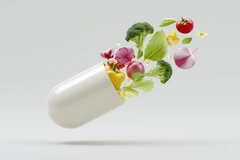Famine grips Gaza: International pressure prompts Israel to declare “humanitarian pause”
The Gaza Strip is in the worst-case scenario of famine, according to the new Integrated Food Security Phase Classification (IPC). The WHO maintains that the situation is entirely preventable, blaming deliberate blocking and delay of food, health, and humanitarian aid via Israel and Egypt.
The intergovernmental organization underscores that this month saw a spike in deaths, with 63 of 74 malnutrition-related deaths. It includes 24 children under five and one child over five. Most of them had died upon arrival or shortly after reaching health facilities due to severe wasting.
Between April and mid-July, over 20,000 children were treated for acute malnutrition, with over 3,000 severely malnourished, reveals the IPC Alert. It notes Israel has intensified bombardments and expanded ground operations, with nearly 6,700 civilians killed since the last analysis.
The alert flags civilians queuing at nutrition clinics or food distribution points are being killed. “Current stocks of lifesaving and preventive nutrition supplies are expected to be fully depleted in the next month.”
Militant attacks killed over 1,000 people near the militarized food Secure Distribution Sites, who were trying to access food (May 27–July 21). “Serious concerns have been raised about people’s ability to access food from the four distribution sites, which are all located in militarized areas, exposing the people to major security threats,” reads the IPC Alert.
More recently, this month, a humanitarian convoy with emergency food travelling to northern Gaza was hit, killing at least 73 people and injuring over 150.
The situation, now at IPC Phase 5 Catastrophe, is characterized by an extreme lack of food, starvation, destitution, and death. The WHO Director-General recently called out the “man-made” mass starvation in the Gaza Strip. He said a two-state solution is the only viable path to achieve long-lasting peace at this week’s UN conference. “A one-state reality where Palestinians are denied equal rights and forced to live under perpetual occupation and inequality? A one-state reality where Palestinians are expelled from their land? That is not peace. That is not justice. And that is not acceptable.”
Market shocks and household strain
A ban on fishing was reinstated on July 12, further limiting local production, with no options to grow, harvest, or hunt their food, notes the IPC Alert.
Weeks of no commercial food entry have caused the market to experience stock shortages, with prices of remaining foods skyrocketing. In June, wheat flour prices increased from 1,400 to 5,600% compared to February.
Moreover, most distributed food is not ready-to-eat, so the lack of cooking gas and clean water is leading people to burn waste to cook, which exposes them to serious health risks, warns the IPC Alert.
 A recent BBC Verify report found that the GHF food basket “provides a full stomach but an empty diet”(Image credit: UNICEF/El Baba).Since October 2023, Israel has killed over 60,000 Gazans in the war. Last October, the entire Gaza Strip experienced acute food insecurity at the IPC Phase 4 Emergency level, with acute malnutrition occurring at the IPC Phase 3 Crisis level.
A recent BBC Verify report found that the GHF food basket “provides a full stomach but an empty diet”(Image credit: UNICEF/El Baba).Since October 2023, Israel has killed over 60,000 Gazans in the war. Last October, the entire Gaza Strip experienced acute food insecurity at the IPC Phase 4 Emergency level, with acute malnutrition occurring at the IPC Phase 3 Crisis level.
In May, IPC warned that Gaza’s entire population faces high levels of acute food insecurity, with half a million people facing starvation. It warned that the worst-case scenario is becoming more likely.
Israel’s “humanitarian pause”
According to reports, the Israeli military airdropped aid on Saturday night in Gaza. Meanwhile, humanitarian corridors will be set up for UN convoys.
Israel’s Ministry of Foreign Affairs declared a tactical “humanitarian pause” in Gaza to enable aid distribution every day from 10:00 to 20:00 until further notice.
“Unfortunately, the UN has failed so far to collect and distribute the large amount of aid trucks that are stored in designated areas inside the Gaza Strip. Now it is expected of the UN to collect and distribute the large quantities of aid, without any further delay or excuses.”
“Israel rejects the false accusations of ‘starvation’ propaganda initiated by Hamas, which manipulates pictures of children suffering from terminal diseases,” it states.
Conflict re-escalation and food blockades
The IPC Alert warns that casualties and injuries are rising after the re-escalation of conflict since March, with a surge this month. Last week, air and ground operations expanded to surrounding towns in the Deir al-Balah area, which has remained unscathed till now. This has forced people to move west to the sea and south to Khan Younis.
The UN partially resumed aid on May 19 after an 80-day blockade, but according to the IPC Alert, its current scale is still below needs.
The Freedom Flotilla Coalition — “sailing to challenge Israel’s illegal siege of Gaza” — recently sent its boat “Handala” carrying baby formula, food, and medicine with 21 human rights defenders from 12 countries. The Israeli military seized the barge earlier this week. The coalition says it was the third attack on a civilian flotilla mission this year.
No aid entered the strip between March 2 and May 18.
 Dr. Mohamed Al-Deeb, Palestine Red Crescent Society at Al Quds Hospital in Gaza City.The UN estimates that only 14%, or 1,300 metric tons, of the 14,900 metric tons of humanitarian aid, including food (97%) and non-food items (3%), reached distribution points in the Gaza Strip in June.
Dr. Mohamed Al-Deeb, Palestine Red Crescent Society at Al Quds Hospital in Gaza City.The UN estimates that only 14%, or 1,300 metric tons, of the 14,900 metric tons of humanitarian aid, including food (97%) and non-food items (3%), reached distribution points in the Gaza Strip in June.
Only 1.5% of the population, 25,000 people, mainly in the south, received food from UN agencies for the first time in weeks in June, due to repeated closures of the Zikim Crossing, details the IPC Alert.
Lack of nutritious diet
According to the IPC Alert, around 62,000 metric tons of monthly staple food are needed to cover basic needs, excluding fresh foods like vegetables and meat. However, only 19,900 metric tons and 37,800 metric tons of food entered Gaza in May and June, respectively.
A recent BBC Verify report, speaking to Prof. Stuart Gordon, an international aid development professor from the London School of Economics, UK, found that the Gaza Humanitarian Foundation’s (GHF) basket “provides a full stomach but an empty diet.”
The group, backed by Israel and the US, claims to have distributed 91 million meals via the basket. However, Gordon points out that although the box is designed to stop acute hunger, it could lead to hidden hunger and increase the risk of diseases like anemia and scurvy.
BBC Verify spoke to Dr. Andrew Seal, an associate professor of international nutrition at the University College London, UK, adding that the boxes are deficient in calcium, iron, zinc, and vitamins C, D, B12, and K and are unsuitable for young children.
Meanwhile, Dr. Mohamed El-Deeb, a Palestine Red Crescent Society doctor at Al Quds Hospital in Gaza City, underscores the critical impacts on children needing food supplements and essential foods.
“There is a severe deficiency of all the necessary equipment, such as flour, sugar, and the essential proteins and carbohydrates for every single individual.”
Furthermore, the IPC Alert warns that food diversity has “collapsed” to its worst level since the conflict started. Households that do eat are surviving on basic foods like bread. “Most households (86%) reported regularly not having food to eat of any kind, and nearly all (96%) reported that they went to bed hungry multiple times in the last month.”
“Nearly nine out of ten households resorted to extremely severe coping mechanisms to feed themselves, such as taking significant safety risks to obtain food and scavenging from the garbage.”













